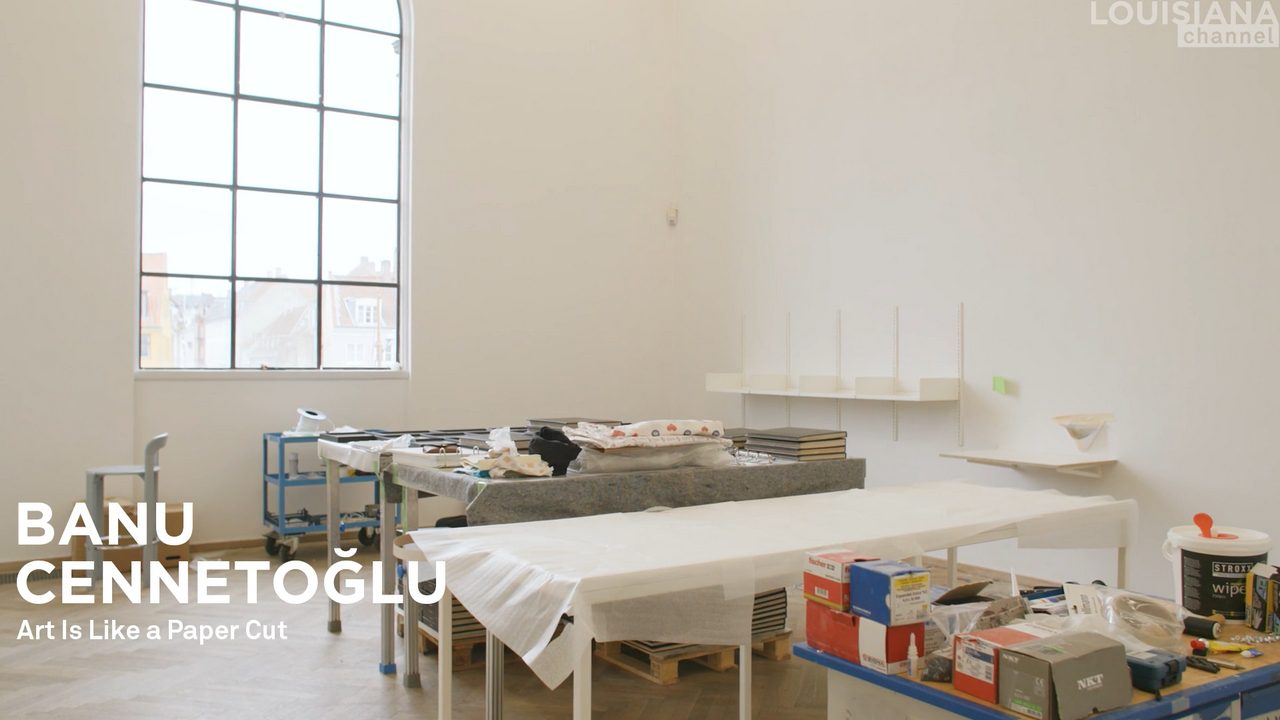VIDEO: Banu Cennetoğlu-Art Is Like a Paper Cut

Artist Banu Cennetoğlu works with words, images, and politics, examining memory, loss, and knowledge. “I don’t have a role as an artist,” Banu Cennetoğlu insists. “I’m trying to do something as a person and take responsibility for what I do.” Her works challenge institutions and narratives. For the opening of Zurich’s new police headquarters, she asked police officers, city officials, and curators to submit handwritten apologies—without specifying what for. “I didn’t want to know. Just something they felt they should apologise for.” She then acid-etched these apologies onto metal.
Her 2003 book “False Witness” explored asylum politics in Europe. Years later, when unsold copies were set to be destroyed, she turned them into fire-starting briquettes. “A book is potential. Now, it carries the full potential of starting a fire.” Books and other bound material are recurring material for Banu Cennetoğlu. Newspapers are another focus. She’s been collecting papers for the same day in the same country in a series of works, exposing how information is shaped. “I really wanted to see all of them together and see how they kind of create these spaces. Because a newspaper is an organised space, it’s a very political space. It’s a space of power.”
Her work “right?” presents the Universal Declaration of Human Rights as golden mylar balloons, left to decay. “This declaration was never really conceived for stateless people,” she notes. “It promises rights for all but only protects citizens of nation-states.” Doubt fuels her process. “How do you work when there’s a war outside? When you witness a genocide? When someone is dying in your house? Do we have to work? What is work?”
Banu Cennetoğlu (b. 1970, Ankara, Turkey) is an artist and publisher whose work explores memory, loss, and the politics of information. She investigates how knowledge is recorded, organised, and controlled using photography, text, and installation. Initially trained in psychology and photography, Cennetoğlu has exhibited at major institutions and exhibitions, including Documenta 14, the Liverpool Biennial, the Gwangju Biennial, the Istanbul Biennial and the Berlin Biennial. She represented Turkey alongside Ahmet Öğüt at the 53rd Venice Biennale in 2009. She is known for projects like “The List”, a public record of refugees who died attempting to reach Europe, and “right?” which critiques the fragility of human rights declarations.
Banu Cennetoğlu was interviewed by Roxanne Bagheshirin Lærkesen in connection to her exhibition ‘Being Safe Is Scary’ at Kunsthal Charlottenborg, Copenhagen, Denmark, in March 2025. Camera: Jarl Therkelsen Kaldan, Edited and produced by Roxanne Bagheshirin Lærkesen, © Louisiana Channel, Louisiana Museum of Modern Art, 2025. Louisiana Channel is supported by Den A.P. Møllerske Støttefond, Ny Carlsbergfondet and C.L. Davids Fond og Samling
